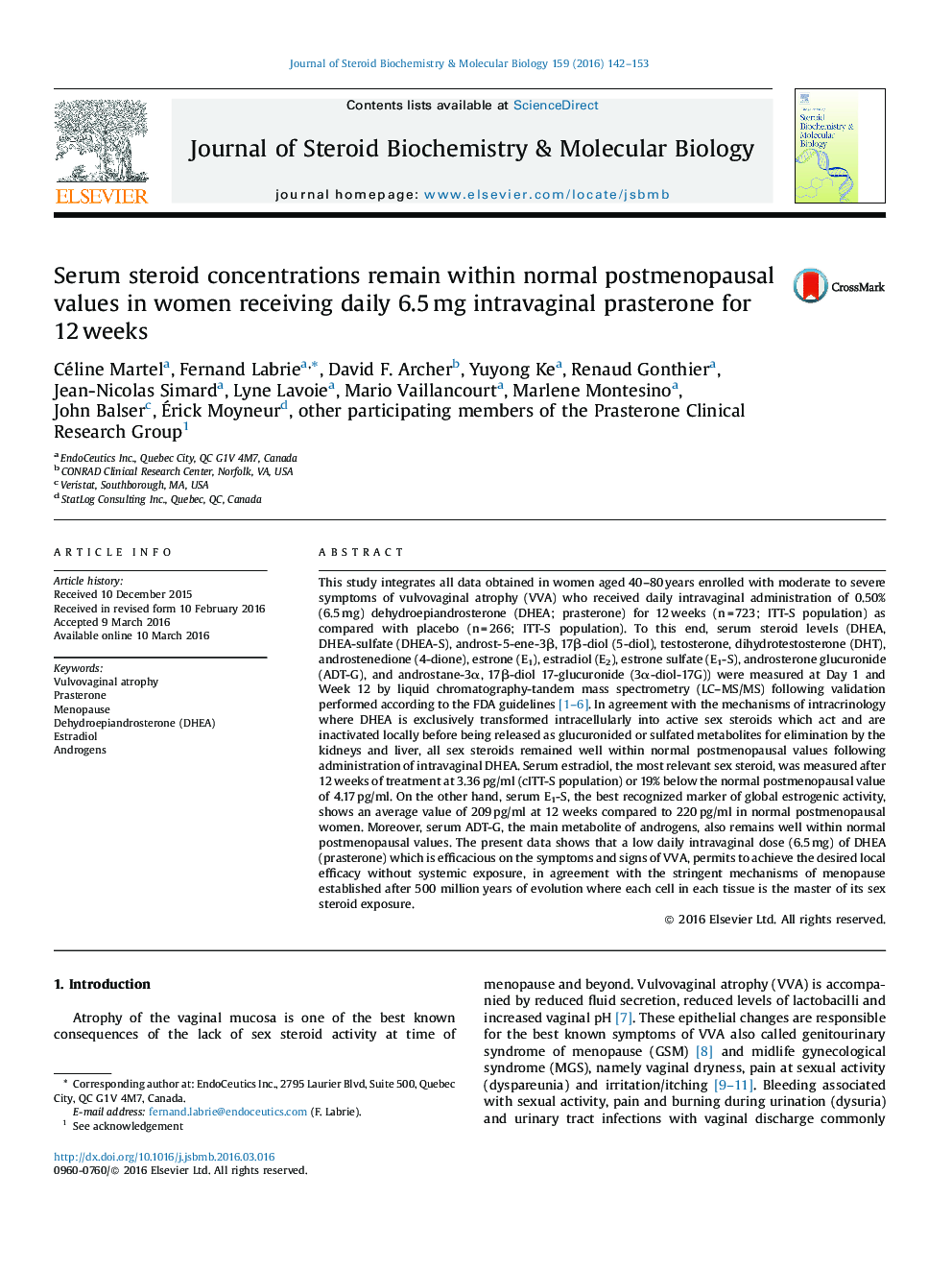| Article ID | Journal | Published Year | Pages | File Type |
|---|---|---|---|---|
| 8338098 | The Journal of Steroid Biochemistry and Molecular Biology | 2016 | 12 Pages |
Abstract
This study integrates all data obtained in women aged 40-80 years enrolled with moderate to severe symptoms of vulvovaginal atrophy (VVA) who received daily intravaginal administration of 0.50% (6.5 mg) dehydroepiandrosterone (DHEA; prasterone) for 12 weeks (n = 723; ITT-S population) as compared with placebo (n = 266; ITT-S population). To this end, serum steroid levels (DHEA, DHEA-sulfate (DHEA-S), androst-5-ene-3β, 17β-diol (5-diol), testosterone, dihydrotestosterone (DHT), androstenedione (4-dione), estrone (E1), estradiol (E2), estrone sulfate (E1-S), androsterone glucuronide (ADT-G), and androstane-3α, 17β-diol 17-glucuronide (3α-diol-17G)) were measured at Day 1 and Week 12 by liquid chromatography-tandem mass spectrometry (LC-MS/MS) following validation performed according to the FDA guidelines [1], [2], [3], [4], [5], [6]. In agreement with the mechanisms of intracrinology where DHEA is exclusively transformed intracellularly into active sex steroids which act and are inactivated locally before being released as glucuronided or sulfated metabolites for elimination by the kidneys and liver, all sex steroids remained well within normal postmenopausal values following administration of intravaginal DHEA. Serum estradiol, the most relevant sex steroid, was measured after 12 weeks of treatment at 3.36 pg/ml (cITT-S population) or 19% below the normal postmenopausal value of 4.17 pg/ml. On the other hand, serum E1-S, the best recognized marker of global estrogenic activity, shows an average value of 209 pg/ml at 12 weeks compared to 220 pg/ml in normal postmenopausal women. Moreover, serum ADT-G, the main metabolite of androgens, also remains well within normal postmenopausal values. The present data shows that a low daily intravaginal dose (6.5 mg) of DHEA (prasterone) which is efficacious on the symptoms and signs of VVA, permits to achieve the desired local efficacy without systemic exposure, in agreement with the stringent mechanisms of menopause established after 500 million years of evolution where each cell in each tissue is the master of its sex steroid exposure.
Related Topics
Life Sciences
Biochemistry, Genetics and Molecular Biology
Biochemistry
Authors
Céline Martel, Fernand Labrie, David F. Archer, Yuyong Ke, Renaud Gonthier, Jean-Nicolas Simard, Lyne Lavoie, Mario Vaillancourt, Marlene Montesino, John Balser, Ãrick Moyneur,
